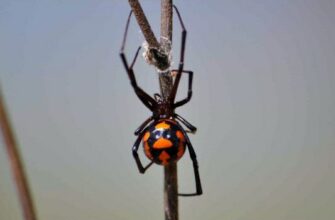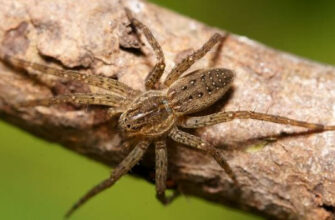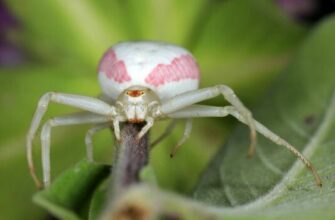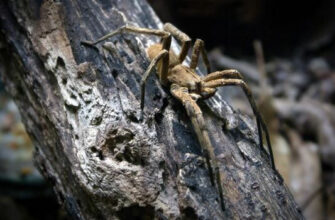There are a lot of species in the family of harvester spiders – more than 1,800. Their main distinguishing feature is very long legs, so it seems as if this spider consists almost of legs alone, because its body itself is small. Therefore, it is often called the long-legged. The haymaker spider very often settles in apartments, almost everyone has seen them.
Origin of the species and description
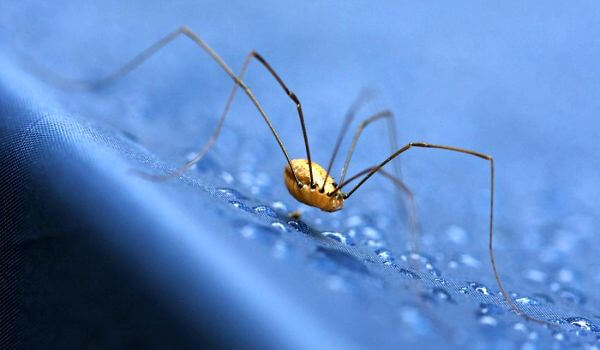
Photo: Harvest spider
The evolution of arachnids is relatively poorly understood . It is known that they have inhabited our planet for hundreds of millions of years, and their ancient ancestors were the first sea creatures to come out onto land and adapt to life on it. Their most important evolutionary acquisition was the web.
Gradually, spiders found more and more uses for it, and other creatures even learned to fly to escape from them and their webs. Now very ancient species of spiders cannot be found, because they are constantly changing, and new species are replacing the old ones.
Video: Harvest spider
So, the family of spiders of harvesters was formed “only” 0.5-2 million years ago – by the standards of evolution, this is indeed a very small time period. How exactly the spiders of the harvestmen developed, from whom they originated, has not yet been reliably established, their research continues.
The name of the family in Latin is Pholcidae. It was described by K.L. Koch in 1850. In total, as many as 94 genera are attributed to it, and about 1,820 species at all – and they still continue to discover new ones, because most of them live in the tropics, often in sparsely populated, remote regions of our planet.
In the last two years alone, B. Huber has described several dozen genera, including hundreds of species living in various parts of our planet: Arnapa in Indonesia and New Guinea, Muruta and Nipisa in Malaysia, Pemona in Venezuela, Magana in Oman – and so on. .
This shows how much work remains to be done by the scientific community in relation to spiders in general, and the family of harvest spiders in particular: even the description of their species is far from complete, not to mention building a clear picture of evolution – the foundation, on which further study should be built.
Appearance and Features
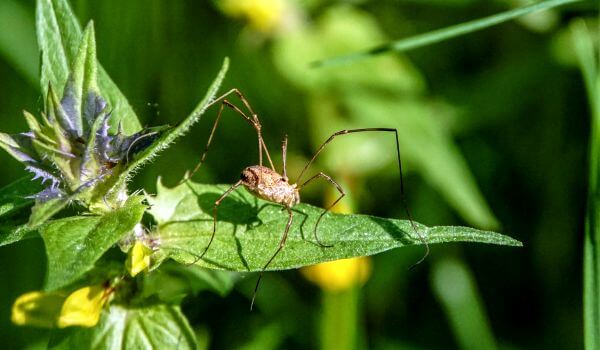
Photo: Harvest spider in nature
Depending on what species the haymaker spider belongs to, its structural features can vary significantly. First of all, the differences relate to its small body: in some species it is well divided into the cephalothorax and abdomen, in others the separation is not so obvious, in some it is elongated, while in others it is spherical – and so on.
Sizes can also vary greatly – you can usually find individuals with body sizes excluding legs from 2 to 12 mm. Moreover, although elongated legs are considered the main distinguishing feature of the family, their length is also very different in reality, and in some forest species they are no longer than the calf.
But still, all such spiders living in the neighborhood with a man, the legs are very long – that’s how they can be easily recognized. Of other common features, it is worth highlighting that there are four pairs of these legs, and the same number of eyes. However, cave-dwelling species have one less pair of eyes.
Males are inferior to females in terms of the size of the body itself, but at the same time they have longer legs. In addition, their pedipalps are different, but this is not visible to the naked eye.
Interesting fact: Harvest spiders are named so for their resemblance to ordinary harvestmen – they are often confused. In fact, harvestmen are not spiders at all, and therefore do not weave a web. They also do not settle in houses, you can usually see them in meadows and fields, as well as in bushes.
Now you know whether or not the haymaker spider is poisonous or not. Let’s see where it lives and what it eats.
Where does the harvestman spider live?
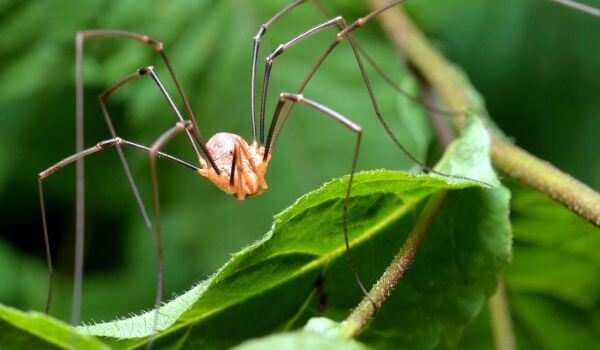
Photo: Poison Harvestman
Its habitat zone includes almost the entire globe, they are absent only in the coldest places on earth – the Arctic and Antarctic. Wherever a person lives, these spiders are also able to live, they are also in Greenland, and in the northernmost settlements of Russia beyond the Arctic Circle.
But this applies to the inhabitants of residential buildings and apartments, in nature they prefer to live in warm regions, winter frosts are difficult for them to endure. Therefore, in the wild there are a lot of them in the tropics and subtropics, and much less in temperate latitudes, and they are not found in cold areas.
Even in houses in the north, they are less common – although still quite common. In nature, they like to settle in caves, other cracks and holes in trees or the ground, old ruins of buildings. In inhabited houses and apartments, they prefer warmer places in the corners or behind radiators – in general they like heat and dryness very much.
An interesting fact: The haymaker spider can move on its long legs, and very dexterously, due to the fact that mechanical and hydraulic principles are combined. Flexion of the legs occurs due to muscle contraction, but they unbend for a completely different reason – due to the injection of hemolymph.
This method of movement saves a lot of energy. The work of the legs of the haymaker spider is so interesting that science fiction writers come up with mechanisms with the same principle of operation, and scientists and designers strive to actually create such mechanisms – it is possible that they will still appear.
What does the harvester spider eat?
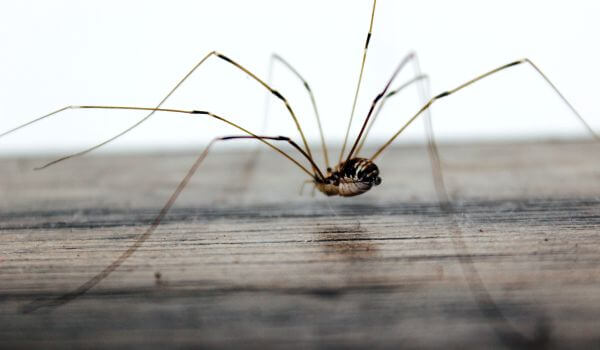
Photo: Dangerous Harvest Spider
Basic of its menu – insects.
Among them:
- beetles;
- ants;
- flies;
- mites;
- gnats;
- mosquitoes;
- aphids.
They very effectively exterminate the living creatures that enter the apartment, and do not allow it to breed – this is very useful. But there is an obvious minus of their presence in the house – the network. They are very extensive in the spiders of harvestmen, and therefore very noticeable. One spider can entangle a whole corner, and then take on the next. Often their webs are located near the ceiling.
The web is not sticky, the whole expectation is that the prey caught in it will become entangled, and this will give the spider time to attack it. He usually goes hunting after sunset. As soon as the victim is in the net, he approaches and additionally entangles her, using long paws.
When she can neither dodge nor attack in response, the haymaker spider bites her, injecting poison – for a person, he does not pose any danger. When the victim dies, a digestive enzyme is injected into it, after which its tissues become a soft slurry, which it absorbs.
And even the remaining solid particles of the body of the prey, the spider is also able to eat: it tears them off with the help of chelicerae, and then crushes them with processes on the front legs and also eats them. If something remains after a meal, he takes food away and stores it for future use – after all, it doesn’t have to be day after day, sometimes no one gets into his net for a long time.
A hungry spider sometimes even starts to rush to prey, just found next to the web, but not entangled in it – in these cases, hunting can be dangerous for him, because sometimes the prey can be stronger and more dexterous than himself.
Often you have to starve in the winter, because the living creatures become much smaller. Then the harvesters begin to feed on other spiders, including fellow tribesmen or their eggs. The hunt for other spiders is carried out differently: the haymaker spider pulls their webs to lure them out, after which it pounces. Of course, this is dangerous: the outcome of the fight can be different.
Interesting fact: If the prey is too large and it is undesirable to get into the network, the harvester spider shakes the net so that it is clearly visible, and potential prey can avoid it. And even if she has already been caught, but still remains too dangerous, he can bite some of the threads himself so that she can escape.
Character and Lifestyle Features
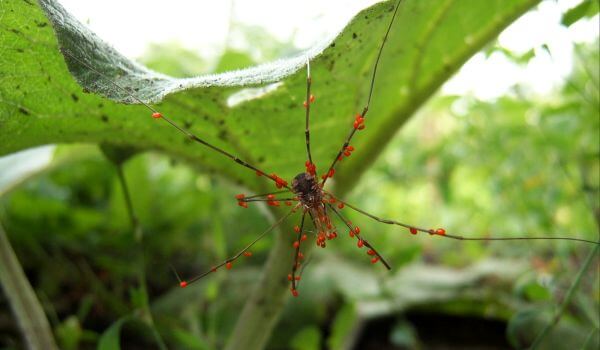
Photo: Spider centipede
A lot of spiders from this family are synanthropes, that is, they accompany humans and are almost never found in the wild – they have adapted to live in houses and apartments, where they are much more comfortable and safer, because they are reliably protected from many predators.
They are active all year round – in winter they continue to spin a web as if nothing had happened, try to catch insects, although there are much fewer of them, sometimes they even lay eggs at this time of the year. This is due to the fact that initially the harvesting spiders originated in the tropics, therefore the seasonality factor did not matter to them.
They spend their days in dark corners, motionlessly hovering in their web – they hide from the sun, because they do not like its rays, even despite the love of warmth, and just rest, gaining strength. The period of activity for them falls on the dark time of the day. While people are sleeping, these spiders can actively move around the apartment in search of prey.
Although haymaking spiders are able to starve for a long time, their patience is not unlimited, and if there is no prey in the house for a long time, they simply leave it – usually this happens a month and a half after fasting, and go to more “bread” places. Therefore, regular cleaning and breeding of various kinds of midges will help him get rid of them.
Social structure and reproduction
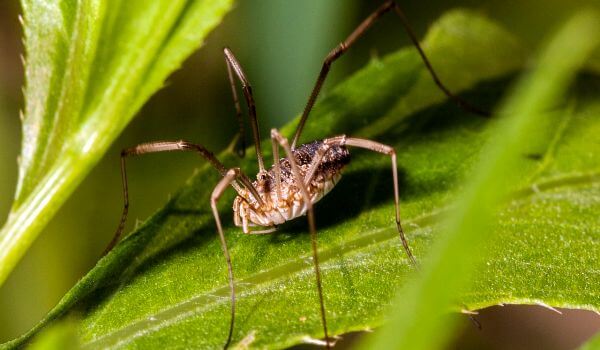
Photo: Harvest spider
Spiders become sexually mature after about a year, during which they molt five times. After that, the males begin to develop a secret for fertilization and look for a female. Having found her web, the male attracts attention: for this, stepping on the web, he begins to shake.
When the female comes out, he feels her with his front legs, letting him know that he is ready for mating. Indeed, otherwise the female may try to attack him – do not forget that cannibalism is not alien to these spiders. However, mating only delays her attack: immediately after it is completed, the male should run.
If he becomes too weak during mating and cannot escape, then the female will still eat him. Therefore, each mating is very dangerous for the male, and most often they fertilize no more than two or three females in a lifetime. But females live much longer, because no one tries to kill them after mating.
Eggs are usually several dozen, up to fifty. At the same time, the female does not build a cocoon, instead she simply pulls the eggs together with a net and carries them with her in chelicerae. Because of this, some fall out – they do not develop further and die off.
After a few weeks, small spiders appear from those eggs that remain in the cocoon. And here, too, not everyone is lucky – some of the spiderlings turn out to be weaker than others, and are not even able to break through the egg themselves and get out. The spider just eats them. The rest develop rapidly and soon molt for the first time.
During molting, they shed their cover – this is a very painful process, after which the spider’s legs become short, and its body is almost transparent. While spiderlings grow up and survive molting, they continue to stay with their mother – she still wears them with her in a net woven for this purpose.
Natural enemies of harvestmen spiders
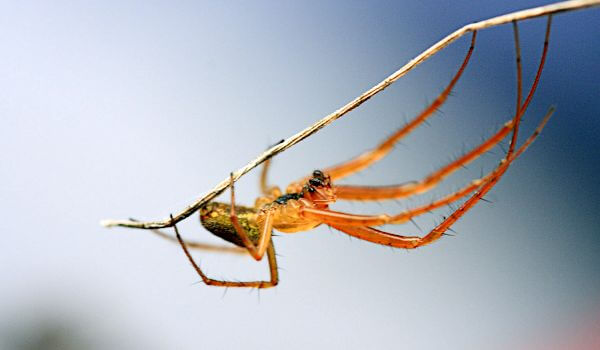
Photo: Spider centipede
In the wild, enemies have there are a lot of them, like other spiders.
A variety of predators are not averse to feasting on them, including:
- birds;
- mice and rats ;
- squirrels;
- toads;
- lizards;
- large insects;
- snakes.
The list is not exhausted on the listed ones – they are not averse to catching and eating almost any predator in size from the harvester spider itself to the squirrel. Larger ones are usually not so much interested in the quality of food, however, they can be caught simply out of interest – for example, cats and dogs do this.
In houses and apartments, in addition to pets, which usually have a moderate interest in spiders, and eventually completely stop responding to them, they have almost no enemies, and therefore they live much easier than in nature. Their main enemies are other harvester spiders or large spiders of other species.
In addition to predators, they are threatened by parasitic fungi from the genus Cordyceps. They grow inside the infected spider until they flood it from the inside – naturally, it dies. After that, they break out and finish eating it completely, so that not even the chitin shell remains.
Interesting fact: Although the web of these spiders is not sticky, some species still use glue. They have hairs on their pedipalps, on which glue is released during the hunt. With its help, harvester spiders securely capture the victim – it is enough to touch it once so that it no longer has a chance to escape.
Population and status view
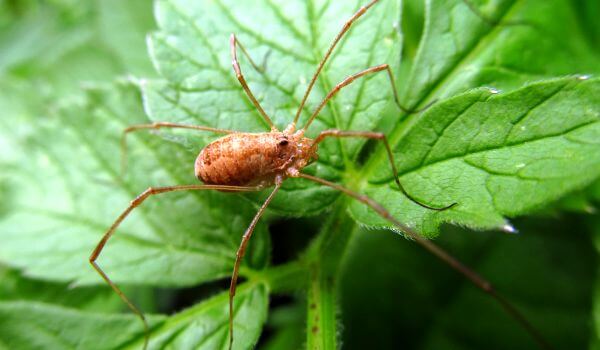
Photo: Harvest spider
Harvest spiders live in almost every house on our planet – it is already obvious from this that their population is very large and nothing threatens it. These are very tenacious creatures that are not able to harm either environmental degradation or other factors, due to which sometimes other living organisms are under the threat of extinction.
But this applies to synanthropic species – they have perfectly adapted to coexistence with humans and, due to this, have expanded their habitat. And this is how those remaining to live in the wild may be more rare – this is evidenced by the fact that more and more new species are being discovered in the far corners of the planet.
Their range may be limited to very small territories, and there are species that live only in one region, usually located in the tropics. However, the danger of extinction does not threaten them either due to the fact that spiders are perfectly adapted and survive even in the most severe conditions.
An interesting fact: In addition to constantly keeping the house clean, it will also help to get rid of harvester spiders by repelling them with smells. They really don’t like the smell of eucalyptus, tea tree, and mint essential oils, so spraying them regularly will help encourage spiders to decide to move to another house.
And kick him out be required due to the fact that, although the haymaker spider is harmless to humans, its webs can be annoying. But it should be noted that these spiders are very effective in fighting other small domestic animals, and therefore, after disappearing, it can multiply greatly, and think again if a spider or two is bothering you.
The haymaker spider is not dangerous and even a useful inhabitant of houses. They fight with other harmful living creatures, the main thing is that they themselves do not become too many, because then their web will be everywhere. There are a lot of different species of these spiders, sometimes their representatives are not much alike, and some live only in wildlife.

